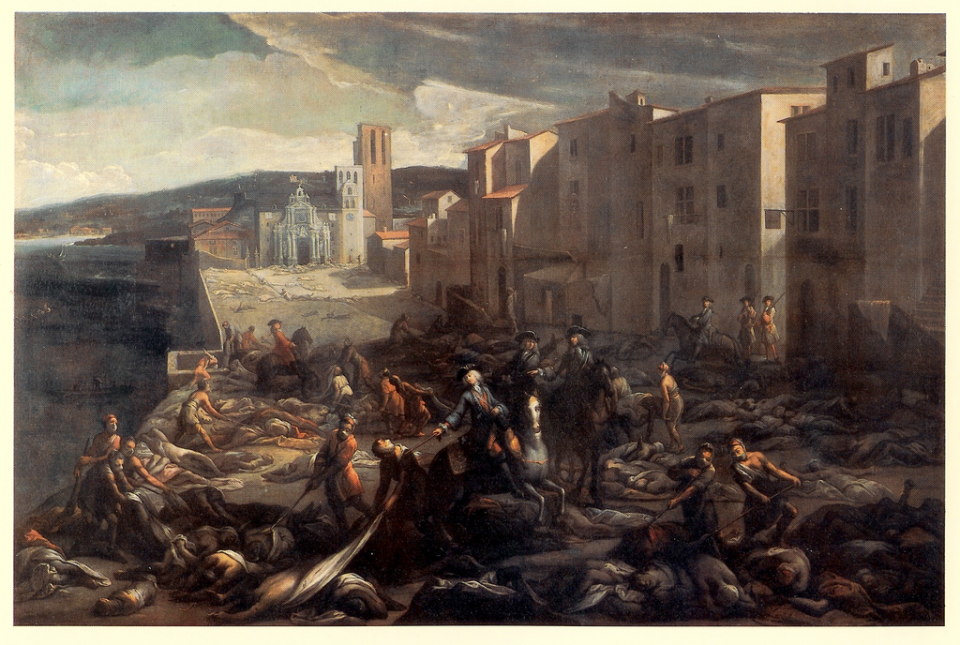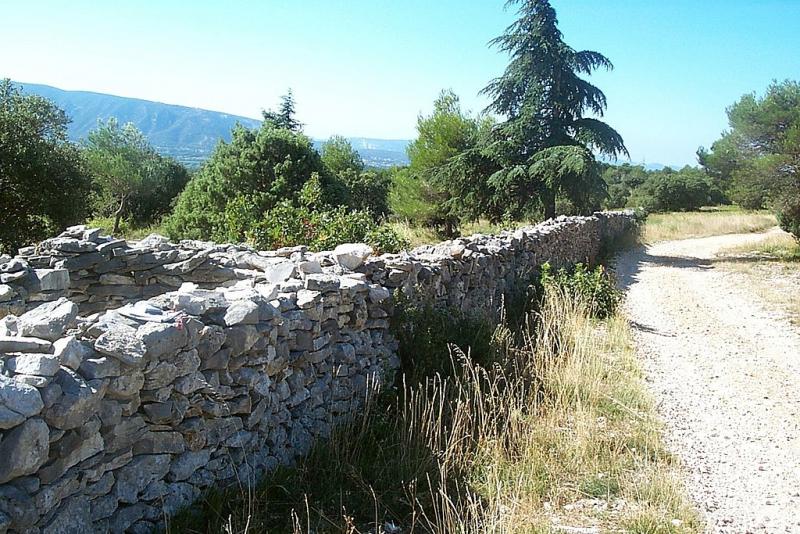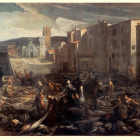From 1720 until 1722, the French region of Provence and parts of Languedoc suffered an epidemic of plague (both bubonic and pneumonic manifestations of Yersinia pestis) which arrived from the Levant. Traditionally, this event has been known as the Great Plague of Marseille, but as this fails to capture the epidemic’s extent beyond Marseille, it is probably better referred to as the Peste or Plague of Provence. Though the figures vary, this outbreak claimed as many as 45,000 lives in Marseille alone—reportedly about half of the city’s population—taking 1,000 lives per day at its height. All together, between 76,000 and 126,000 people perished in southeastern France.

Scène de la peste de 1720 à la Tourette (Marseille) by Catalan-born French painter Michel Serre
Scène de la peste de 1720 à la Tourette (Marseille) by Catalan-born French painter Michel Serre
Kept in the Musée Atger in Montpellier, it depicts the burying of the dead by Chevalier Nicolas Roze (1675-1733).
Click here to view Wikimedia source.
 This work is licensed under a Creative Commons Public Domain Mark 1.0 License.
This work is licensed under a Creative Commons Public Domain Mark 1.0 License.
It was a disaster of enormous proportions, and the royal government in Paris (where the Regent, Philippe d’Orléans, had moved in 1715) undertook the massive endeavor of managing the crisis. At this time, the Crown became more heavily involved in the management of a disaster than ever before, marking an increasing concentration of state oversight that represents an early example of the state-centralized disaster management that is ubiquitous today. First, the government suspended all commerce and travel out of Provence using strict quarantines, certificats de santé (certificates of health), and military cordons (or barriers) that involved not only city bourgeois militias and provincial levies, but also one quarter of the regular army (interestingly, this military cordon would eventually result in the Mur de la Peste, or Plague Wall, that one can still see in parts of Provence today).

Mur de la Peste (Plague Wall) in Provence
Mur de la Peste (Plague Wall) in Provence
Photo by Psycho Chicken (2004)
Click here to view Wikimedia source.
 This work is licensed under a Creative Commons Attribution-ShareAlike 3.0 Unported License.
This work is licensed under a Creative Commons Attribution-ShareAlike 3.0 Unported License.
The authorities also created a new Conseil de Santé (or Council of Health) in Paris that was to meet twice a week at the Louvre to oversee all aspects of crisis management in southern France during the plague. And in September 1720, the Crown appointed Charles Claude Andrault de Langeron, maréchal in the king’s army, as Commander in Chief of the city of Marseille and its territory. Along with the échevins (municipal magistrates of Marseille), he was responsible for overseeing plague management on behalf of the king. He saw to it, for example, that food and relief were distributed, that dogs and cats were slaughtered, that cannons were fired often (to dispel miasmas), and that merchandise and other properties suspected of infection were burned. Streets, homes, and merchandise likewise underwent regular disinfection and perfuming with vinegar or herbs. Langeron designated prayer days and organized religious processions, while axing social events of all kinds, and closing or regulating markets, taverns, inns, and houses of ill repute in infected areas. Fundamentally, he was charged with executing martial law, with absolute power in matters pertaining to the policing and administration of the city.
All of this was in line with the increase of state power and the rise of the centralized state that was taking place over the seventeenth to eighteenth centuries. In fact, the energetic and robust response from the royal government to the crisis in Provence comes as no surprise if we accept James Collins’ premise that “the transition from immature to mature monarchical state happened roughly between 1690 and 1725.” In this period the state created a bureaucracy that “became steadily more professional, more intrusive, and more threatening to elites as the century wore on.” This was no less the case in times of crisis as we see during the Peste of Provence, which the government used partly as an opportunity to showcase the integrity and value of the state by extending its reach into previously local matters and proving itself useful.
The centralization of crisis management represents a major part of state formation, and the Plague of Provence represents one of the earliest and most pronounced instances of a rigorous, centralized response to disaster, not only in France, but in the capitals of emerging nation-states all over Europe, including Lisbon, Madrid, and London. Each responded with remarkable vigor to the French outbreak as a means to not only fend off the infection (which was ultimately successfully confined to southeastern France), but also to impose a variety of measures that would advance the very processes of administrative centralization and control that were already underway. Ultimately, the Peste of Provence represents one of the last chapters in the book of medieval plagues and the first chapter in the book of modern disease outbreaks and disasters.
How to cite
Ermus, Cindy. “The Plague of Provence: Early Advances in the Centralization of Crisis Management.” Environment & Society Portal, Arcadia (2015), no. 9. Rachel Carson Center for Environment and Society. https://doi.org/10.5282/rcc/7029.
ISSN 2199-3408
Environment & Society Portal, Arcadia
 This work is licensed under a Creative Commons Attribution-NonCommercial-ShareAlike 4.0 International License.
This work is licensed under a Creative Commons Attribution-NonCommercial-ShareAlike 4.0 International License.
2015 Cindy Ermus
This refers only to the text and does not include any image rights.
Please click on the images to view their individual rights status.
- Collins, James B. The State in Early Modern France. Cambridge: Cambridge University Press, 2009.
- Ermus, Cindy. “The Spanish Plague That Never Was: Crisis and Exploitation in Cádiz During the Peste of Provence.” Article currently under review.
- Green, Monica Helen, ed. Pandemic Disease in the Medieval World: Rethinking the Black Death. The Medieval Globe 1. Kalamazoo: Arc Medieval Press, 2015.
- Takeda, Junko Thérèse. Between Crown and Commerce: Marseille and the Early Modern Mediterranean. Baltimore: The Johns Hopkins University Press, 2011.








